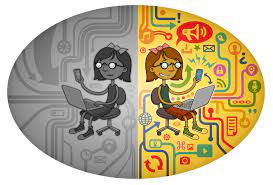VR and the ESL Classroom
Virtual reality (VR) are tech tools that I considered out of reach for the average ESL classroom—I couldn’t imagine the applications to language learning, and I didn’t think the technology would be accessible in most classrooms in the near future. However, last week’s presentation on emerging technologies helped me realize that this technology may not be as irrelevant or inaccessible as I first thought.
Accessing VR
There are numerous VR devices on the market. However, for someone just
beginning to explore its use in the classroom, Google Cardboard (n.d.) offers access
to VR glasses with a reasonably low barrier to entry, with glasses costing
between $5 and $50 CAD.
Benefits
Bonner and Reinders (2018) highlight several potential benefits to
VR use in education:
- - Increases student motivation
- - Lowers anxiety related to second language use in an authentic environment
- - Provides context for reading and listening activities
- - Reduces classroom distractions
Challenges
There are several significant challenges to the use of VR in the
ESL classroom. As it is a relatively new educational technology, there is
little training available for teachers on its use in the classroom (Bonner &
Reinders, 2018). Early adopters (and their students) need to be comfortable
with a trial-and-error approach. Further, while Google Cardboard offers low
cost VR glasses, students must still have access to their own smart phone that
supports VR technology (Bonner & Reinders, 2018). Teachers should be
cognizant of whether every student in class has this and have equitable, discreet
alternatives for any students who cannot or choose not to bring their own smart
devices. Additionally, the value VR
brings is its immersive experience, so teachers should consider how to make VR
activities accessible to learners with visual, auditory, or other disabilities.
Possible applications of VR with Google Cardboard in ESL classes
-
Improve communication skills. Virtual Speech (VirtualSpeech, 2022)
allows users to practice and receive feedback on spoken and non-verbal
communication skills in a low-stakes environment. I could imagine using this in
an advanced or business English course to practice presentations or interview
skills, or to work on soft skills like body language and active listening.
-
Contextualize learning. Using YouTube 360 (2022), a VR video channel, learners could explore
places or topics to ensure all students have the background knowledge that will
help them comprehend reading and listening activities.
-
Prompt writing and vocabulary. After viewing a video on YouTube 360 (2022), teachers
could elicit rich vocabulary to describe the experience and use the video as a
writing prompt.
-
Complete a scavenger hunt. Create or have students create a
scavenger hunt to be completed on Google Street View (2022). This could allow students to practice giving
and following instructions in a low stakes, yet authentic and interesting, environment.
References
Bonner, E., & Reinders, H.
(2018). Augmented and virtual reality in the language classroom: Practical ideas. Teaching English with Technology, 18(3), 33-53.
Google (n.d.). Google Cardboard.
https://arvr.google.com/cardboard/
Google Street View (2022). Google. https://www.google.ca/streetview/
Virtual Reality [YouTube360]. YouTube. Retrieved July 24, 2022, from https://www.youtube.com/360
VirtualSpeech (2022). VirtualSpeech-VR
Courses [App]. Virtual Speech https://play.google.com/store/apps/details?id=com.virtualSpeech.android&hl=en



Comments
Post a Comment